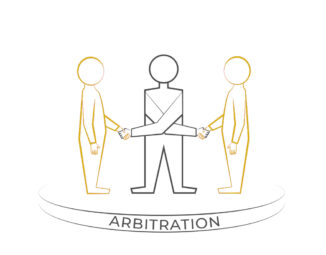Exit Strategies For Commercial Tenants: Key Provisions For Early Termination of a Lease
There are various scenarios under which a commercial tenant may wish to terminate its lease. One of the most common reasons is that the tenant’s business is expanding and the tenant has outgrown the leased space. Conversely, if the business is failing, the tenant may want to downsize or close. A sale or merger may also require that the lease be terminated. It is critical for a tenant to anticipate these scenarios and to consider exit strategies when negotiating a new lease.
In the event that a lease does not provide termination options for the tenant, a landlord’s willingness to agree to an early termination will depend on factors such as the length of the existing lease term and the status of the rental market. If there is not much time left on the tenant’s lease and the location of the premises and condition of the market is such that it will be easy to re-let the premises, the landlord may be open to terminating and entering into a new lease with another tenant for higher rent. However, if the landlord will have trouble finding a replacement tenant or if there is a significant amount of time remaining on the lease, it is unlikely that the landlord will agree to termination without receipt of the remaining rent or at least a large termination penalty from the tenant. In order to avoid this situation, it is best to negotiate provisions, such as the following, that address termination and provide feasible options should a tenant require an early exit.
- Lease Term: The length of the lease term is a key factor, especially for a tenant who is opening a new business. A long term lease (usually over 5 years) may offer certain savings and incentives for an established business. However, shorter term leases allow a tenant to terminate or renegotiate after a certain amount of time, in the event that its business needs change. The lease can provide for renewals or automatic renewals, allowing termination within a certain number of days prior to the end of the initial term or any renewal term. One solution may be to allow for a shorter initial term (e.g., 2 years) and then to provide for a longer renewal term (e.g., 3 to 5 years) or multiple renewal terms (e.g., 3 renewal terms for 2 years each). Such renewals may include a rent increase. However, if the tenant intends to renew, it is likely that its business is doing well and that the tenant will be able to plan for such an increase.
- Break Clauses: A break clause gives an option to both the tenant and landlord to terminate a lease at least once during the term. Such clauses can be written to provide a termination option either earlier or later in the lease term and are exercisable if certain conditions are met (e.g., all rent has been paid to date and proper notice is provided).
- Bailout Clauses: A bailout provision allows a tenant to be released from the lease if its sales do not reach a predetermined level. This option could also be limited to apply only, for example, in the first or second year of the lease. A landlord may be more receptive to this option for a new business. However, if the tenant is well established and profitable, it is less likely that a landlord would agree to this type of clause.
- Assignment and Subleasing: Although a tenant can always request landlord approval of a sublease or assignment, whether provided for in the lease agreement or not, it is best if these are expressly permitted under the lease. It is common that these clauses would require the landlord’s consent, based on the assignee or sublessee meeting certain conditions (similar net worth to the original tenant, etc.). However, the tenant should negotiate language stipulating that the landlord cannot unreasonably withhold its consent. Another option is to provide that a sublease or assignment to an affiliated entity or to a successor to the tenant (for example, in the event of a sale of the company) is permitted without the landlord’s consent. Although it is helpful to include language addressing both options, an assignment is usually a better solution for a tenant, since subleasing does not release the original tenant from liability for rent and other obligations under the lease. The tenant should negotiate assignment language that provides for release of the original tenant upon assignment.
- Co-Tenancy Clauses: These clauses provide a tenant with an option to end its lease or reduce rent if a certain anchor tenant leaves the building in which the leased premises are located. Another related option is to provide that the tenant may terminate its lease or be given a reduction in rent if the occupancy of the building falls below a certain percentage. Such provisions apply mainly to locations and businesses that are dependent on customer traffic, such as shopping centers. They can also protect a tenant from a situation in which a building is not being well maintained or if the area where the building is located is in decline and, as a result, the building is partially vacant.
- Termination Penalty: Including provisions in the lease that address a termination penalty upfront avoids negotiations at the time of termination when a tenant may have less leverage and therefore have no choice but to accept a higher penalty.
Although changes to the lease or a termination settlement can be negotiated at any time, it is important for a tenant to anticipate such issues at the outset of the lease and to include provisions such as these in order to best prepare for the uncertain future of its business.
To learn more about exit strategies for commercial tenants, please contact Kimberley A. Farmer.





